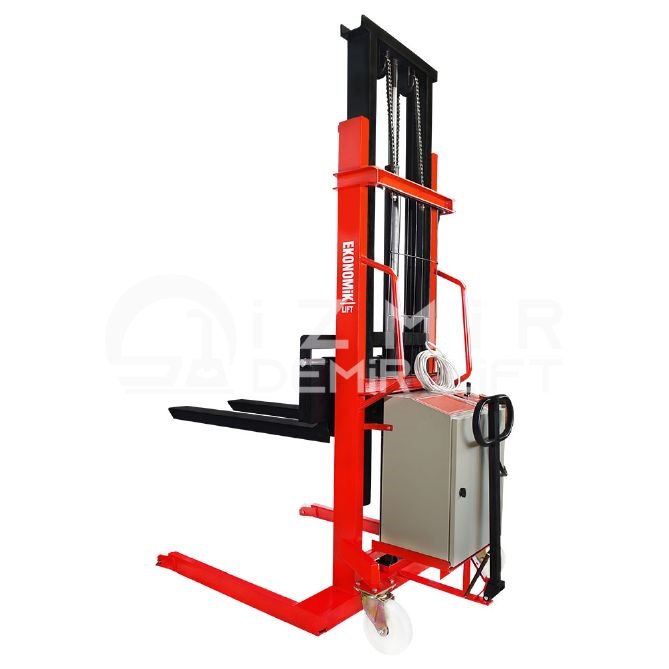In today's increasingly competitive market, the efficiency of warehouse and logistics operations directly determines a business's profitability and growth potential. The cornerstone of this efficiency is the right equipment investment. Choosing a stacker isn't just a technical choice; it's a strategic decision that will shape your operational future.
So, how should you interpret the key differences between "semi-electric" and "fully battery-powered" models to optimize your investment? A wrong decision can lead to operational bottlenecks and hidden costs, while the right choice can lead to a leap in efficiency.
This guide highlights the critical differences between these two technologies and provides a roadmap for making the most accurate and profitable decision.
Key Difference: Power and Philosophy
- Semi-Electric: Intelligent Assistant: These models deploy power at the most critical point. A powerful electric motor handles the most demanding task of lifting and lowering the load. This speeds up the process and eliminates personnel fatigue. The machine is positioned manually, under the operator's control. This translates to a simpler mechanism and lower costs.
- Fully Battery-Powered: The Tireless Marathoner In these models, power is distributed throughout the entire operation. Load management is fully automated with precise and powerful motors. The machine moves effortlessly using a control lever. The operator drives, not walks. This provides a definite increase in efficiency, especially over long distances and at high speeds.
4D Analysis for the Right Decision
1. Performance and Operational Flow
- Fully Battery-Powered: The champion of long-distance, high-speed operations. If you're constantly moving pallets from one end to the other in a large warehouse, the time and energy savings offered by the electric drive feature are undeniable. It directly increases order picking speed and daily throughput.
- Semi-Electric: Ideal for short-distance sprints. It offers the highest efficiency in scenarios where loads are stacked in a specific area (next to the truck, at the exit of the production line, in a single rack aisle). By automating the lifting process, it revolutionizes operations compared to manual pallet trucks.
2. Budget and Financial Return
- Semi-Electric: Offers a clear advantage in terms of initial investment cost. Fewer complex mechanical and electronic components make it a highly attractive financial solution, especially for SMEs and startups looking to optimize their budgets.
- Fully Battery-Powered: Due to its comprehensive technology, larger batteries, and traction motor system, it requires a higher initial investment. This cost is offset by the increased efficiency it provides under heavy use.
3. Maintenance and Operational Sustainability
- Semi-Electric: This is where the "fewer parts, fewer problems" principle comes into play. Its simpler design reduces potential failure points, thus reducing maintenance requirements and costs. It minimizes the risk of operational disruptions.
- Fully Battery-Powered: Components such as the traction motor, transmission, and advanced control cards may require regular maintenance and expertise. This factor should be considered when calculating the total cost of ownership.
4. Usage Scenario and Business Area
- Semi-Electric: Ideal for locations with high-volume operations, such as retail store warehouses, small and medium-sized workshops, and goods receiving and shipping.
- Fully Battery-Powered: This is the natural choice for large and dynamic environments like logistics centers covering thousands of square meters, distribution warehouses, and large production facilities where pallets are in constant flow.
Final Decision: Which Method is More Profitable for You?
- Distance: How many meters do my pallets travel on average?
- Density: How many pallets do I process daily, and how fast-paced is my operation?
- Budget: Is initial investment cost or long-term total cost of ownership my priority?
If your answers lead you to a short-distance, medium-density, and budget-oriented solution, a semi-electric stacker isn't just a piece of equipment for you; it's the smartest and most profitable investment.
Based on this analysis, you can take the right step by leveraging İzmir Demir Lift's industry experience and extensive product range to implement the semi-electric stacker solution that will deliver the highest efficiency for your business.
